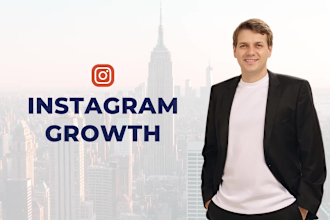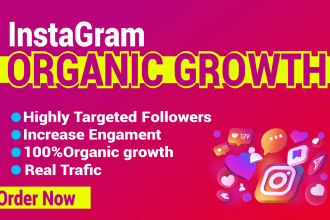Browse categories
Organic Social Promotions
Promote your business organically with our social media experts
|13,000+ Results
Sort by:
Organic Social Promotions FAQs
What is the process for organic social media growth?
Organic social media growth refers to growing your social media channels without paid advertising. This means you need to leverage an excellent social media strategy, such as regularly engaging your audience and building a solid community. To grow your social media channels organically, you first need to know your target audience and understand their wants and needs. You can use data from competitor analysis, keyword analysis, and social listening to bolster your research. Once you’ve determined your audience, you can work with influencers within your industry to grow and engage your social media audience. You’ll also need to conduct competitor analysis to gain insight into what type of content they’re creating and which ones get the most engagement from their audience. Moreover, aside from creating original, high-quality, and relevant content, you must ensure that what you share offers your audience value.
How do I choose the right platforms for organic social media growth?
Picking the right platform for organic social media growth can be tricky, given the sheer amount of social media platforms available today. Do in-depth research to ensure that you choose the right channels. First, identify your target audience and where they spend most of their time. For example, if you’re targeting Millennials and Gen Z social media users, you may want to choose platforms like TikTok, Snapchat, or Instagram. On the other hand, if you’re targeting professionals or other B2B enterprises, you might want to consider using LinkedIn. Of course, don’t discount other social media channels, such as Facebook and Twitter. Research by Databox shows that Facebook is still the leading social channel for driving organic growth, followed by Instagram, Twitter, and LinkedIn.
How can I measure the success of my organic social media efforts?
You need to track several key metrics to evaluate the results of your organic social media efforts. Your social media metrics tell you whether or not your organic social media strategy is working. These include: - Awareness metrics – reach, impressions, audience growth rate. - Engagement metrics – engagement rate, amplification rate, virality rate. - Video metrics (applicable if you’re creating video content) – views, completion rate. - Customer experience metrics – customer satisfaction score, net promoter score. - ROI metrics – click-through rate, conversion rate. - Share of voice metrics – social share of voice, social sentiment. While social media platforms have built-in analytics, you can gain more advanced insights using different social media analytics tools, such as content performance trackers and social listening tools.
How do I create a consistent brand voice across multiple social media platforms?
Keeping your brand voice consistent across different social media platforms can be challenging. But, the good news is, it’s not impossible. One way to ensure that your brand voice remains consistent across platforms is to define your brand voice. This includes identifying your brand values, missions, and unique value proposition. From there, you can create a brand voice guide, which you can apply to different types of content, from articles to social media posts. In your brand voice guide, you may want to define specifics regarding components like visual branding, sentence structure, and terms or jargon used.
How can I determine the best posting frequency for a brand's organic social media presence?
So, how often should you post on your social media channels? Consistency is critical when building your brand’s organic social media presence. However, each social media platform is unique, and thus, you must regularly test and analyze your results. Creating a content calendar also helps you keep track of your posting schedules for each platform. To make things easier, here’s a summary of how often you should post on each social media platform: - Instagram – 2-3 times per week, depending on the type of content you want to post. - Facebook – 1-2 times a day. - Twitter – 1-2 times per day. - LinkedIn – at least once a day. However, more than applying trial and error to determine the best times to post, it’s crucial to create and share high-quality content regularly. While posting frequently can help improve your channels’ performance, creating and sharing relevant and valuable content can help your audience better engage with your channels.
How should I interact with my audience and respond to comments and messages on my organic social media accounts?
Interacting with your audience can do wonders for your organic social media accounts. One of the best ways to respond to your audience is to make sure that your replies are engaging and thoughtful. For example, if someone asks a question, you can give an in-depth answer. Or you can inject appropriate humor into your response to help keep things light. You can also consider asking your audience questions or requesting them to post a photo in response to your query. This way, you can learn more about them. It also helps to respond quickly and often to your audience’s comments. If you see any unwarranted or abusive comments, take appropriate action to keep your channels safe for your audience.






















